Herb Fascination: Tansy
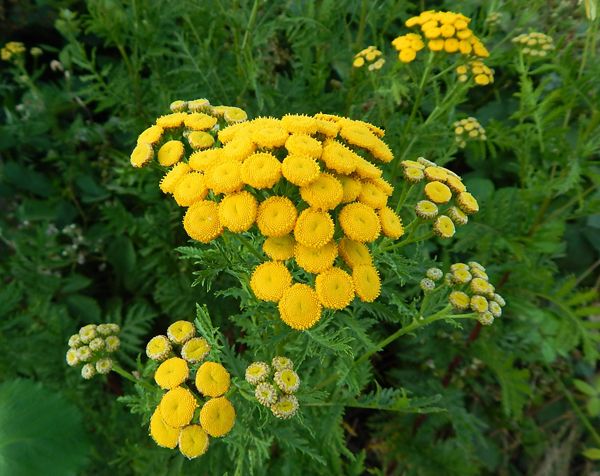
Tanacetum vulgare also Chrysanthemum vulgare, aka Scented Fern, Stinking Willie, Bitter Buttons, is an extremely hardy perennial herb you use the leaves, and flowers of. It grows 3’ – 5’ high and can be found on roadsides, abandoned land, and in waste places. Zones 3 – 9.
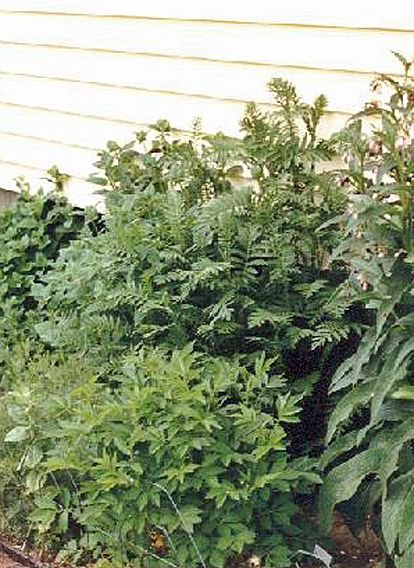
This was one of the original herbs planted in the first herb garden in 1992. It has survived in the same place to this day.
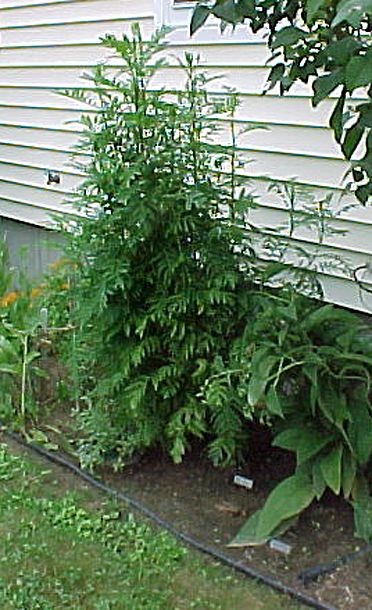
July 2003 and still going strong
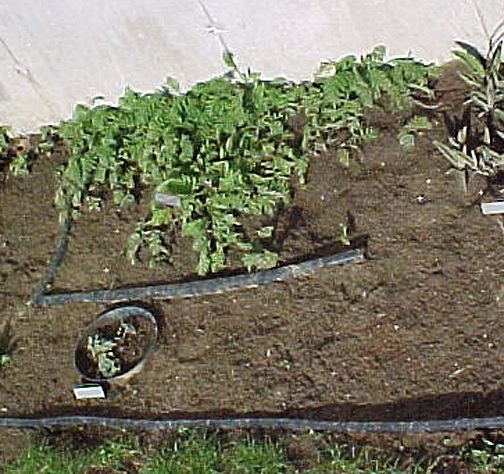
Just coming up in April 2005
Flowers: dense clusters of flat, button-like, mustard yellow flowerheads, flowers July – October, on the ends of the stems
Leaves: feathery, dark green, narrow, lance shaped leaves with deeply toothed leaflets alternating along the stem. Fern-like.
Cultivation: full sun but will tolerate partial shade or light shade, prefers well drained soil that’s medium dry. Sow in spring or divide the roots in spring or fall.
Plant 2’ – 3’ apart, will need frequent thinning as it is invasive. Don’t grow indoors.
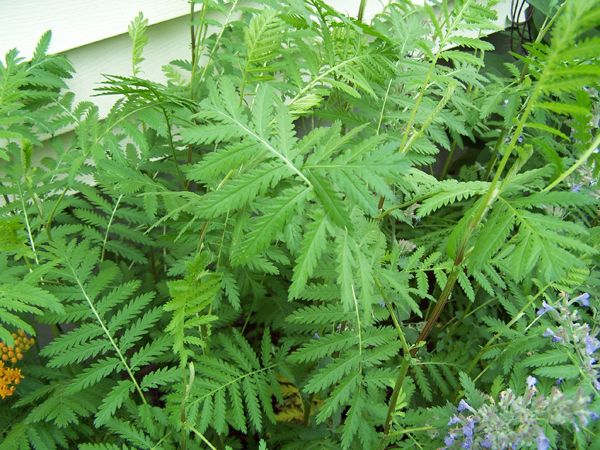
Medicinal: leaf tea is good for colds, stomach ache, and getting rid of intestinal worms.
Leaves in a poultice are good for cuts and bruises.
Flowers and leaves in an infusion are good from sprains, but can irritate skin.
Do not use during pregnancy.
Culinary: leaves are good with rhubarb, as a rub for meat, or in meat pies, omelets, and stuffing.
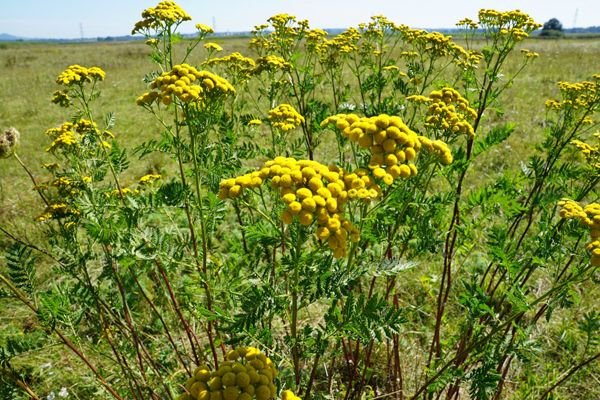
Other: the plant resists frost and cold. It will grow in the same patch for decades.
Plant it near fruit trees to repel insects.
Flower: makes a golden dye
Leaves: wrap meat in the leaves to deter flies and preserve it.
Deters ants and mice
Use plant in compost for its potassium content.
I’ve dehydrated the leaves and flower rays to feed to the layers over the winter to get rid of intestinal worms. I also dry it and use it for bug deterrent in my cedar closet.
There are many medical uses for this plant, but I’ve not yet tried any.
References:
Taylor’s Perennials page 98
Field Guide to Herbs page 66
Field Guide to Wildflowers page 249
Credit: tansy in field CC0 Domaine public
I never knew you could use tansy leaves in culinary dishes and for eating! Thanks for sharing that!
I really don't like tansy. Common tansy and tansy ragwort are widespread in my area and extremely invasive and difficult to get rid of. Tansy ragwort is on the list of plants that must be controlled in my state.
I would avoid taking it internally. They both contain thujone which is toxic and causes seizures and liver damage in large doses. Smaller doses over time can have a cumulative effect leading to liver damage. There are many cases of cattle dying from eating tansy ragwort that was growing in their pasture. Usually animals don't eat common tansy, due to its strong odor, but it can cause the same issue.
For some odd reason, things considered invasive in most places just aren't here on the farm, and the tansy is one of them. It's been there since 1992 and I've never seen it anywhere else, on farm or off. But good to know it is invasive in other locales so people can make the choice.
That's interesting. We have a few large patches of it around our property and it's always trying to pop up in new places. Maybe it really likes our climate. I do see tansy in a lot abandoned or poorly maintained property around here.
i think this stuff grows wild along parts of our waterfront! i'll keep my eyes open in a couple of months & remember to check it out.